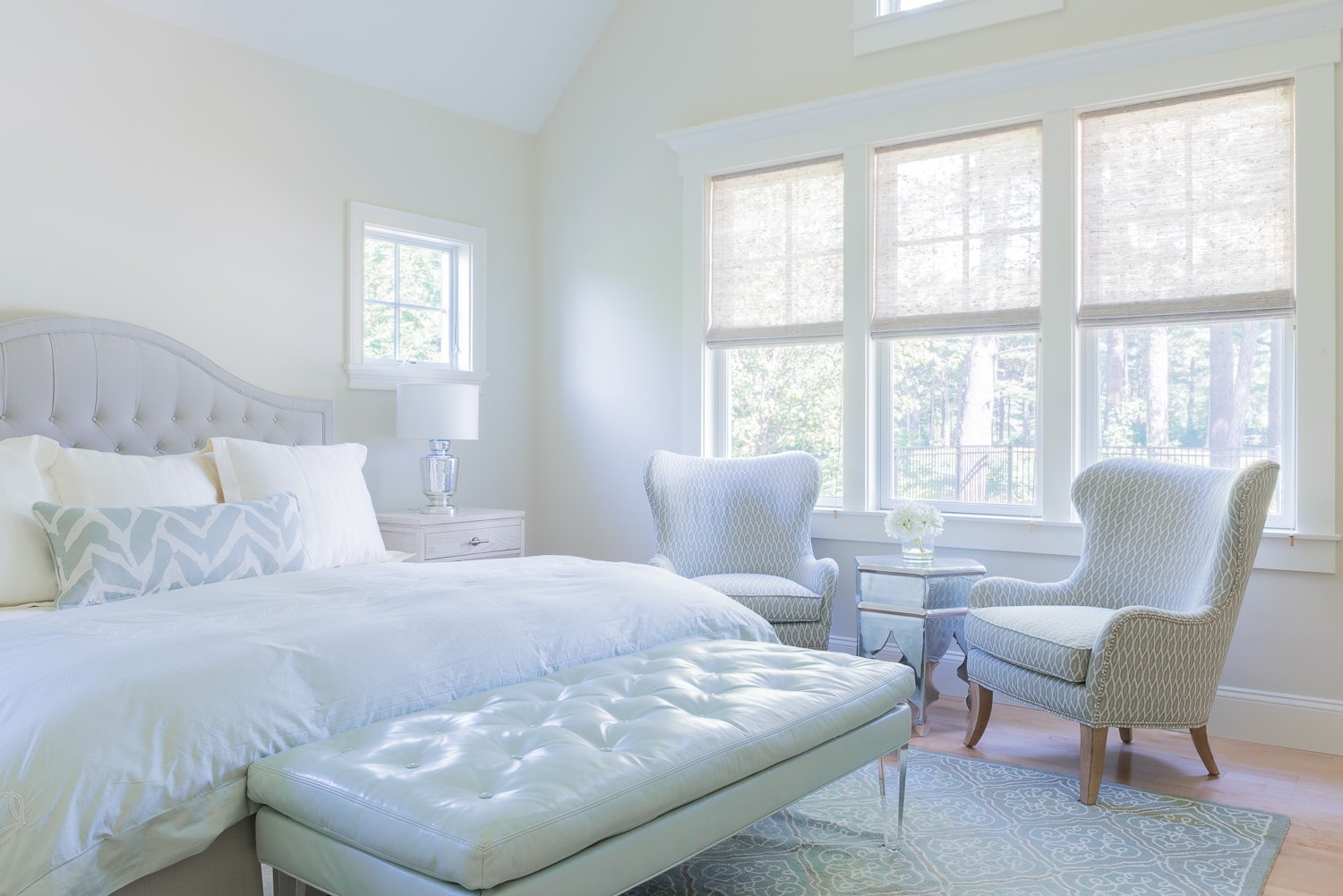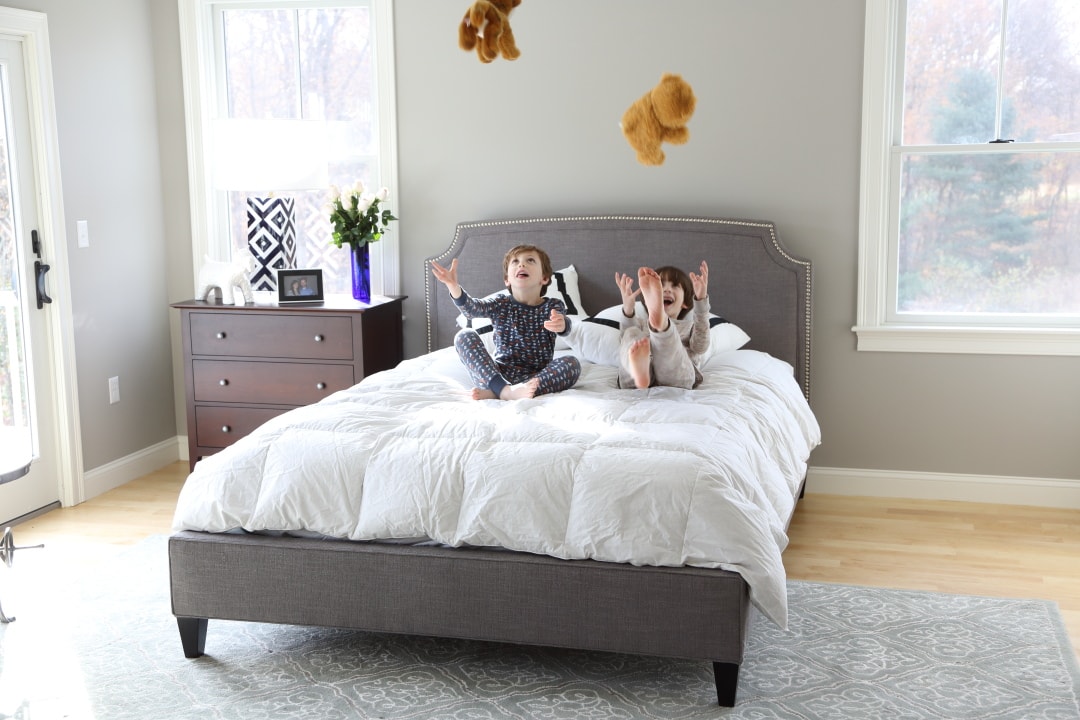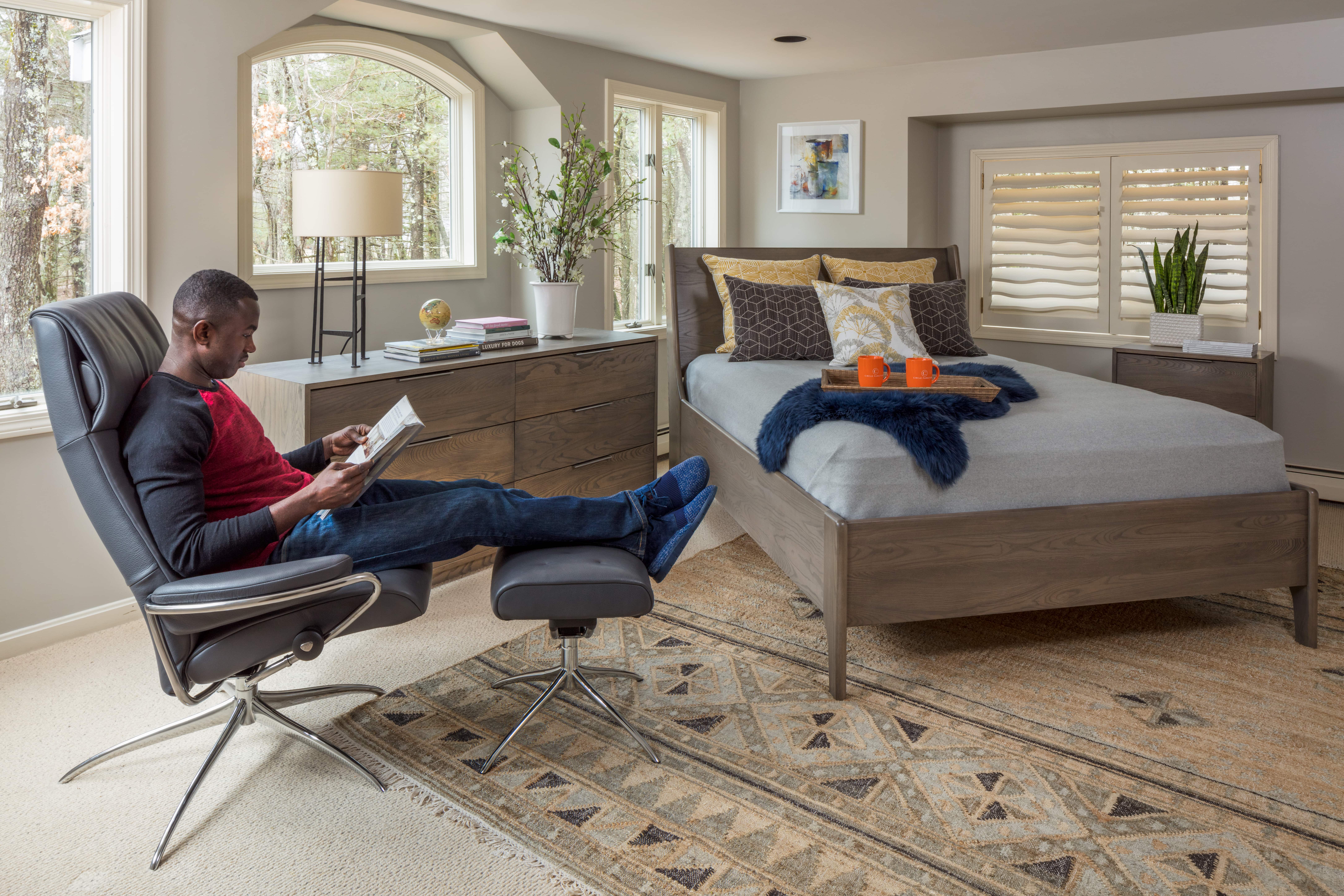13
Apr 2018

The design of your bedroom says a lot about who you are as a person; how you relax, what colors soothe you, whether you're a minimalist or a maximalist or somewhere in between. It's a private space in the home. But that doesn't mean the design shouldn't bring you joy whenever you walk in. Having a space that feels like your own and makes you comfortable is incredibly important. It should be a place to take refuge from the day. But relaxation isn't the only element that goes into designing a bedroom; there's also functionality to consider. In order to keep a bedroom functioning the way it should, there are some important things to consider.
The Basics
As with all design projects, the first step is to ask yourself some questions about the room:
-
How much storage will you need
-
What's the traffic flow
-
What will the room's functionality be, and how often will it be used
-
How do you want the room to make you feel
Once you've asked yourself these questions, the next important design element to consider is the placement of the bed.

Whether you choose to have space on either side of the bed for a nightstand, or you prefer to have it against the wall, the bed placement will dictate how the rest of the room will look and function. It will also affect how traffic flows through the room. One very simple question you might ask yourself when considering the design of your bedroom is how tall your nightstand should be. There isn't an exact science to this, but in general, the nightstand should be a few inches higher than the mattress. Most importantly, it should be functional. If you can't reach objects on your nightstand easily, then you probably need to rethink the height. When considering how to space plan for your bedroom, it's important to keep the windows unobstructed. This will keep the space open and full of natural light.
Design tips
A calming environment will mean something a little different to everyone. But here are some tips to start inspiring you:
-
Avoid bright primary colors, and instead add in soothing colors. Deep colors will create a warm, cozy feel, while pale cool colors are calming. Warmer tones, like pale gold, will add warmth and light to a bedroom that doesn't get a lot of natural light.
-
A tonal, monochromatic color scheme is beautiful in a bedroom.
-
Custom bedding is a great way to add color and design to the bedroom.
-
Add in soft lighting through a variety of lamps.
-
Texture adds a multi-dimensional element to a bedroom, and it can be easily added in with faux fur throws, pillows, and rugs.
-
Don't neglect the walls! Add mirrors and artwork that calms or inspires you.
Storage, symmetry, and space
While your bedroom by no means has to be perfectly symmetrical, it is a good idea to ground the bed in the room. Placing the bed in the middle of the wall is a good way to do this, making it the focal point of the room. Another way to ground the bed is to use one large rug that the bed sits on top of, rather than having many scattered rugs. This tends to look more put together and places more emphasis on the bed as a centerpiece. Storage is key. Not only does it add an element of design, but it also will keep the space free of clutter, which is vital in a relaxing environment. Having the ability to easily put your clothes and "clutter" away at night is important. Read More: How Much Does it Cost to Furnish a Bedroom

Conclusion
The bedroom is an opportunity to get respite from the world and to bask in your own space. The design of your bedroom shouldn't be an afterthought. Ultimately it's a private space, so it's a wonderful opportunity to think about how you want to end the day. Once you've physically or visually placed the bed in the room you can begin to consider how everything else will flow around it. You want to be sure that there's enough space to walk in between the wall and the bed, and that it isn't difficult to maneuver around the room. After you've space planned, you can then begin to consider the more creative elements of design. The color scheme, the wood finishes, the bedding, and the rest of the finishing touches. We understand that interior design can be intimidating, and we want to be here for you every step of the way. Get to know our designers and come into one of our showrooms to get inspired and get started on your design project.
Read more: Bed Size Guide: How to Choose the Perfect Sized Bed

